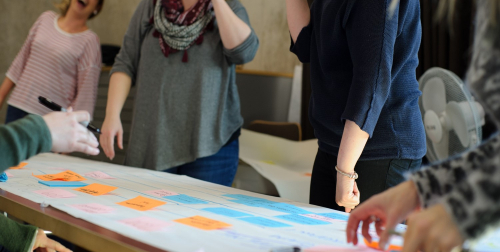Before investing time and energy in generating more creative ideas you should review what you’ve got and think of how you’ll get any idea to make it through to market.
Creativity. It’s one of the buzz words of our time. I’ve spent many years helping teams generate concepts and strategies. In this time, I’ve seen first-hand how ‘relatively’ easy it is to come up with new ideas. Create an appropriate environment; provide a whole-brain framework; inspire with purposeful stimulus and the ideas will come.
Even when individuals self-rank as low on creative ability, they are often the ones to whom final selected ideas can be traced back to.
But not everyone will achieve a high score for personal creativity (defined as individuals with an ability to rapidly manipulate abstractions). For that we need to look at people who are biologically gifted with a high degree of ‘Openness’ and a high I.Q.. These people tend not to last long in large organisations because they don’t work well in systematised environments… but that’s another story.
Creativity does not equal innovation.
It’s hard to monetise ideas because of the many obstacles to getting from an idea to a saleable ‘thing’ (i.e. an innovation). This explains why there are so many starving artists in the world! When survival requires making money, the challenge of turning an idea into a money-making innovation is a serious problem.
What do businesses really want when they ask for help with ‘creativity’?
Approach such a request more like an episode of Cash in the Attic than the Crystal Maze. Begin collating ideas that already exist. Revisit them in context of the current needs of the business and its customers as well as emergent trends and macro influences. Interrogate them with a fresh perspective to unlock their true value. It is also worth defining the criteria against which an idea will be classed as an innovation by the business.

Creativity
Businesses are designed like efficient machines. To do well they need conscientious people who are good at keeping things working. These dutiful people keep businesses on track thanks to their focus on productivity. The flip-side of this is that they avoid the high risk/high reward nature of creativity in place of the low risk/low reward business as usual.
Where are the barriers to moving from creative to innovative?
After the initial euphoria of a creative session comes the realisation that someone’s got to do the work. Yet, supporting mechanisms are rarely in place at this early stage.
Is the barrier to ‘ideas’ becoming ‘innovations’ the structure of the business or is it the people who run the business? Whatever the challenge, it wouldn’t hurt to learn how to care for ideas with potential.
Consider creating and incentivising teams whose role is to find marketable ideas. These are the fearless and calculated risk-embracers. They need to not be penalised for the ‘fails’ but incentivised for applying learnings from the hitches and mistakes they experience on their road to uncovering successes.
Start with the big picture clear.
A successful strategy adopted by many businesses is to articulate their strategic roadmap. The roadmap rallies teams around a clearly defined goal and sets out a customer narrative. It clarifies not only what needs to be done but most importantly, why. This approach can be applied to pack, product, content and even how the brand story will unfold to achieve the vision.

Roadmap
Once a roadmap exists, creative sessions can focus on generating ways to deliver against gaps or specific goals along the roadmap.
Roadmaps help put a value on ideas as they bring to life how they’ll help a brand develop and stay relevant. When engaging cross-functional teams this approach is helpful with project and resource planning as well as winning the commitment of both hearts and minds. They can also powerfully show the benefit of an idea reaching the market in financial terms. This alone can be enough to generate the support and energy to overcome the ‘business-as-usual’ barriers!
So, before you ask for help with creativity, take a moment to think about what would happen if the best idea in the world came out of your session.
Would it live, or die?
